Manker was kind enough to supply me a U21 for the review.
Manker’s specs:
- Emitter Type: CREE XHP35 HI
- Max Lumens Output: 1300lumens
- Maximum Beam Intensity: 124000cd
- Maximum Beam Distance: 700 meters
- Working Voltage: 2.8-4.35v
- USB Charging Current: 2A (Over charge and discharge protection)
- Circuit Driver: PFM/PWM Synchronous booster intelligent conversion circuit Intelligence Lithium battery charge design
- Reflector: aluminum reflector
- Material: Aero grade aluminum alloy (Surface treatment: Premium type III hard anodized anti-abrasive finish,Thickness> 50μm
- Switch Type: Electronic Click switch
- Length: 148mm, Head diameter: 59mm, Body diameter: 35mm
- Weight: 290g (without battery)
- Shockproof standard: 1.5m
- Waterproof Standard: IPX-7

The U21 comes in a big cardboard box.
Inside the box: light, spare o-rings, battery adapter, lanyard, micro USB cable and manual (English and Chinese).


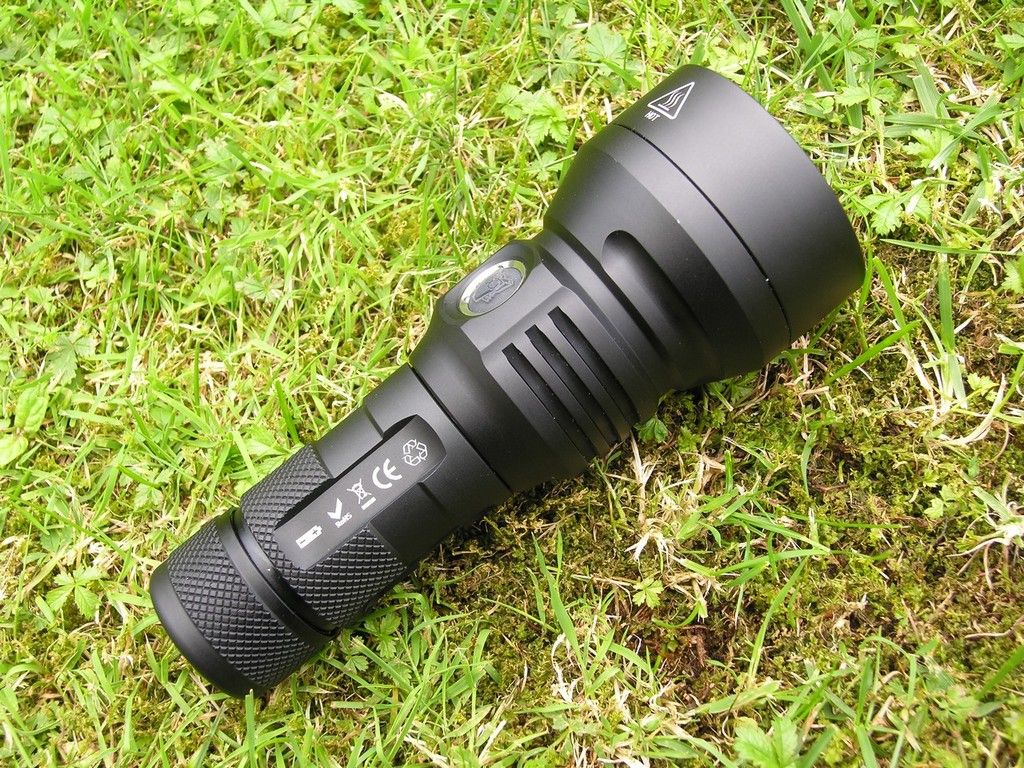
The U21 has an electronic switch at the head

There is some knurling on the light, and the anodization is matte black.
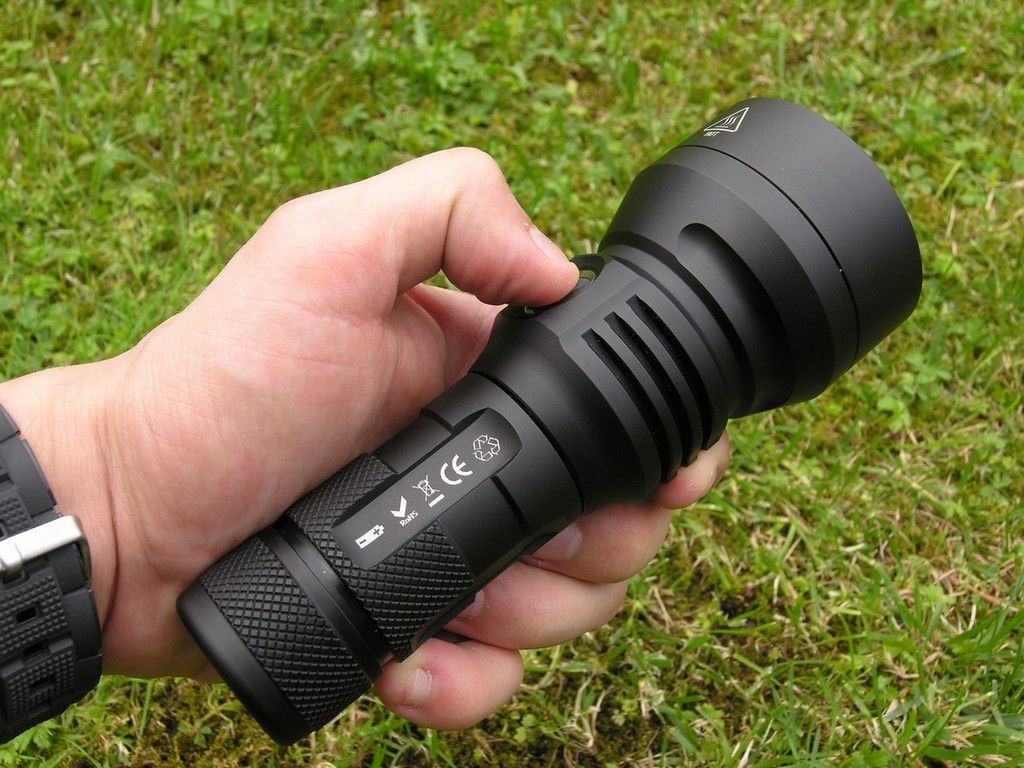
In the big and smooth reflector there is a CREE XHP35 Hi emitter, CW 6000K.

The switch on one side, on the other the micro USB port for charging the light. The rubber cover when it is in position stays recessed.
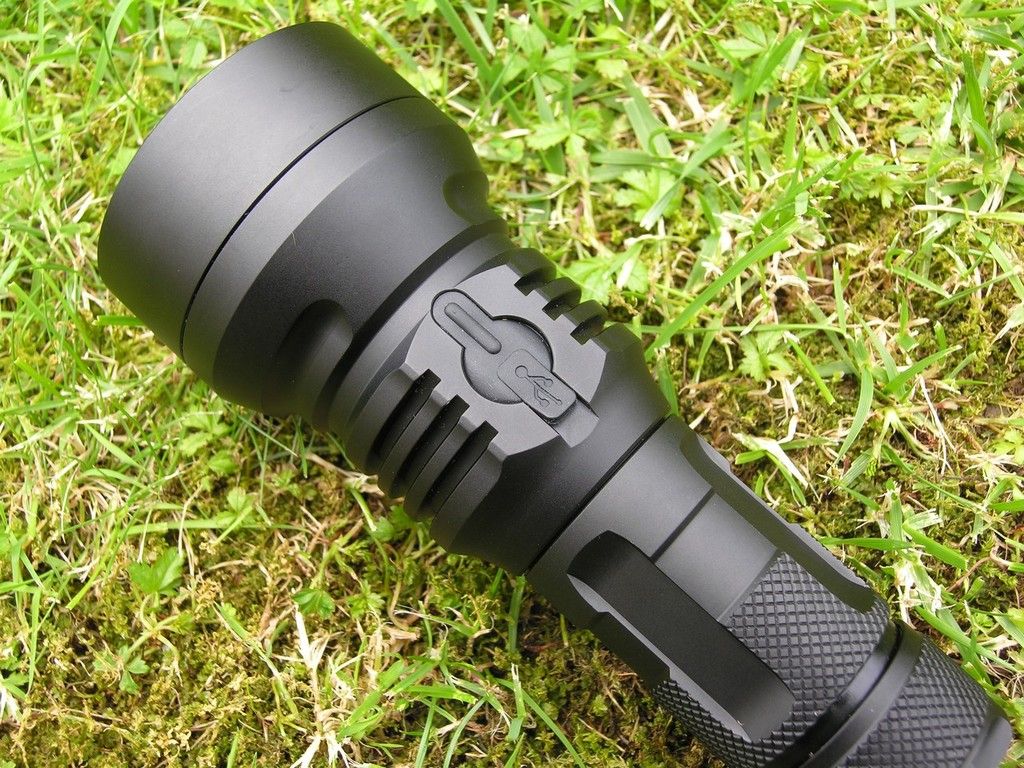


Under the electronic switch there is a red-orange led, like the blue one on the U11. The rubber cover of the switch can be removed by untwisting the metal bezel.
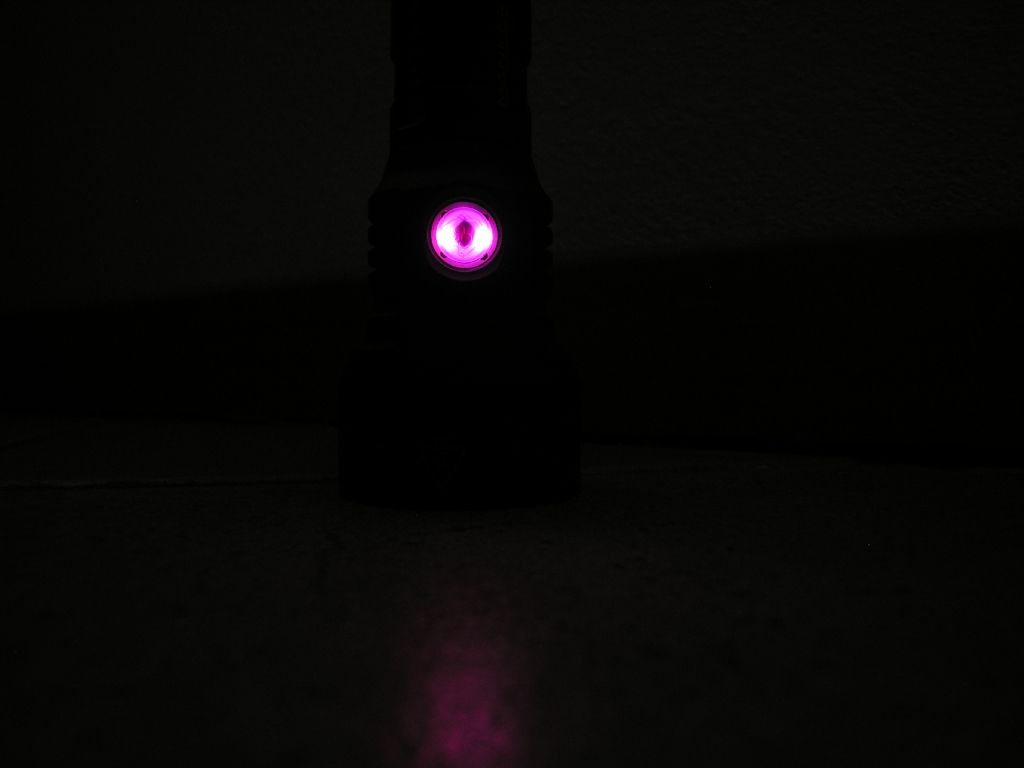
Here with the Manker U11 dragon breath mode

Well machined and anodized threads (you can physically lockout the light by unscrewing the tailcap or the head).

At the tailcap and at the head, the contact points are double nested golden springs. This is a solution that decreases the resistance and allows more current to pass. No physical protection against polarity inversion.
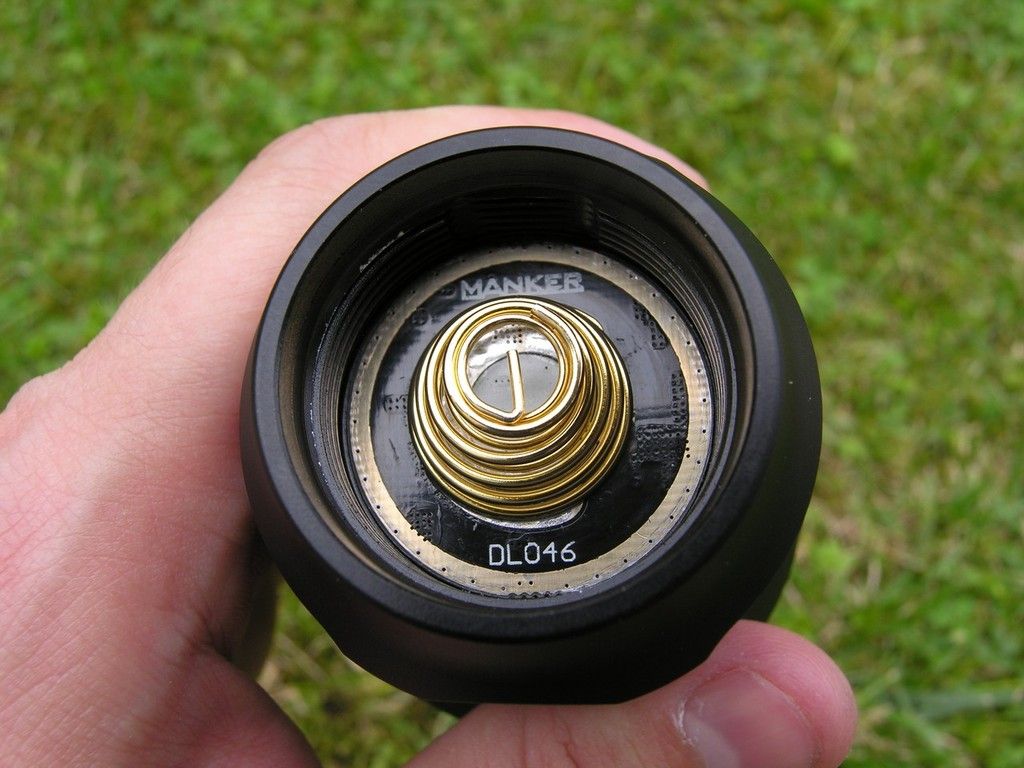


The translucent plastic battery spacer allows the use of an 18650 battery inside the battery tube that can fit a 26650 battery.

U21, U21… what is inside your head?

An AR treated glass, a big and heavy threated aluminium reflector (it screws inside the head of the light) and a big baseplate for the LED.
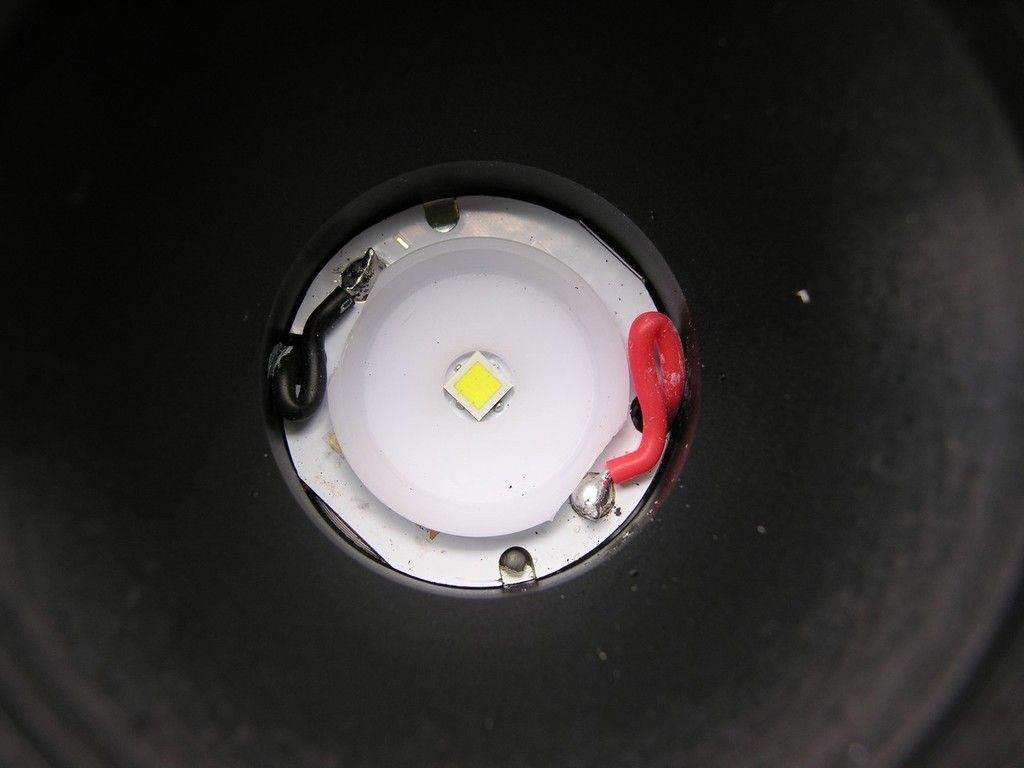
Size and comparison with other lights (Manker U21, Manker U11, Armytek Predator 2.5, 47 Quark 123^2



UI
The U21 has a UI similar to the one of the U11, but simpler.
From off, one short click turns the light on at the lowest level.
From off, a long click turns the light on at the last used level (low mode does not count).
When the light is on, a double click gives you strobe mode.
A single click when the light is on advances in the next mode (low medium hi turbo if you are in the constant output mode, strobe SOS and dragon flash if you are in the flashing mode).
There is a shortcut for dragon flash: from off make 3 double click.
When the light is on dragon flash, a single click will activate the SOS, a double click will activate the last used mode.
In dragon flash mode, the led under the switch will slowly turn on and off, dimming.
When the battery is running low, the led under the switch will stay on.
Output, Beamshots, Runtime.
For powering the U21 and getting max performances, Manker recommends to use IMR cells, and advices to not use protected cells. This because the PCB of protected cells may trip and stop the battery.
I do not have any 26650s, so I tested the output using two different 18650 batteries: LG MJ1 and LG HG2, unprotected batteries. I got no differences, so for the runtime test I used the LG MJ1, since they provide the same output as the HG2 but better runtime.
The outputs measured are higher on all levels, compared to Manker specs. I do not show the low mode value because of my improvised setup: it has too much error at low measurements.

I measured:
- Low 369 Cd
- Mid1 13’650 Cd
- Mid2 37’250 Cd
- Hi 69’400 Cd
- Turbo 119’600 Cd
Beamshots, at 1 meter from the wall.

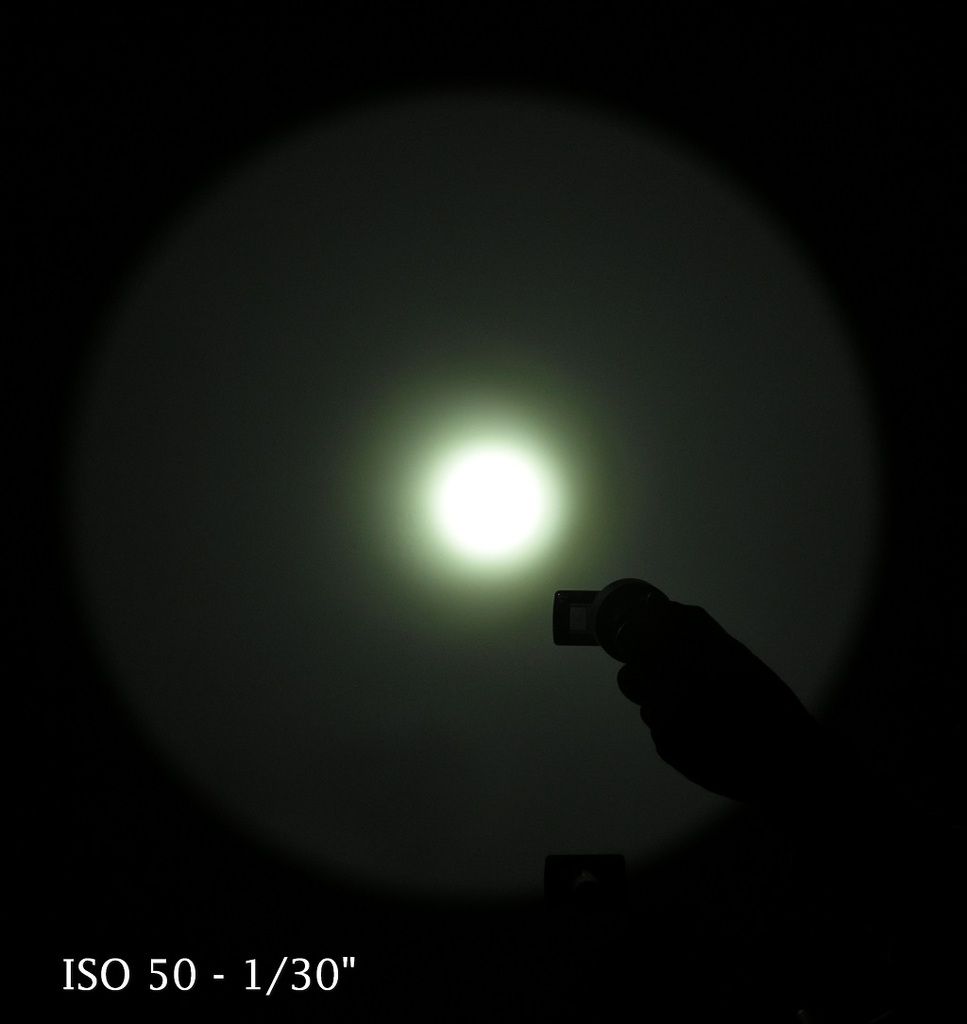

Real world Beamshots. To my eyes the pics I took with the 4” exposure are less bright than the light, and the one with the 8” exposure are overexposed. Here are the pics with 4”.
A bit more than 100 meters (120?)

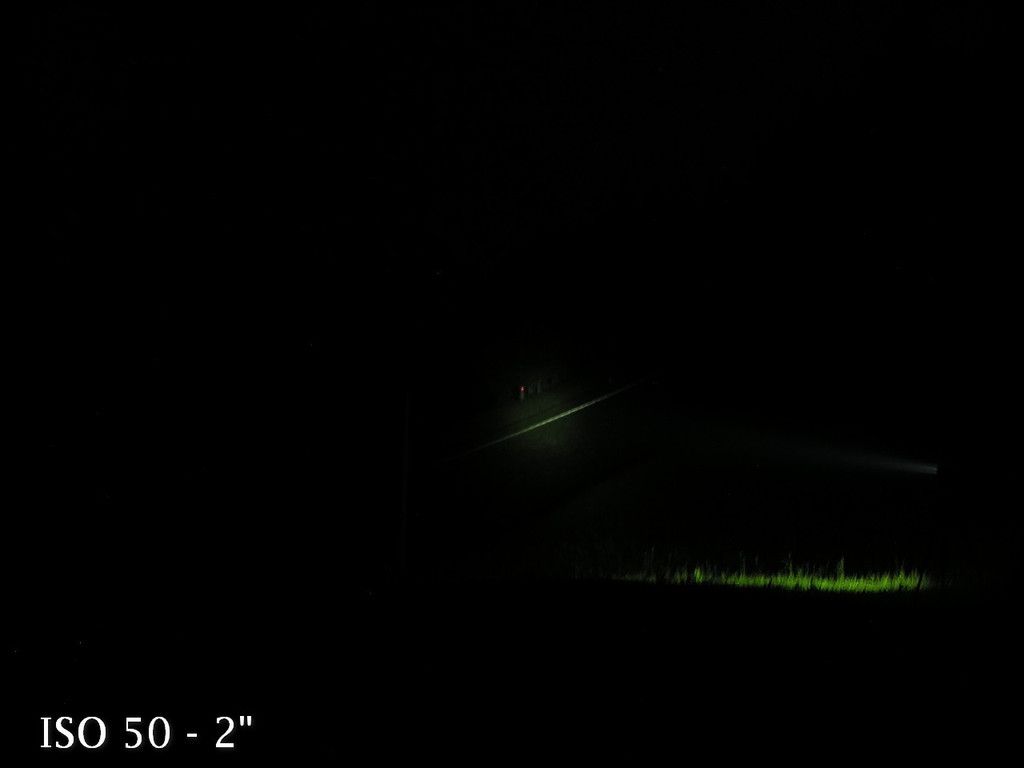
280 meters at the building
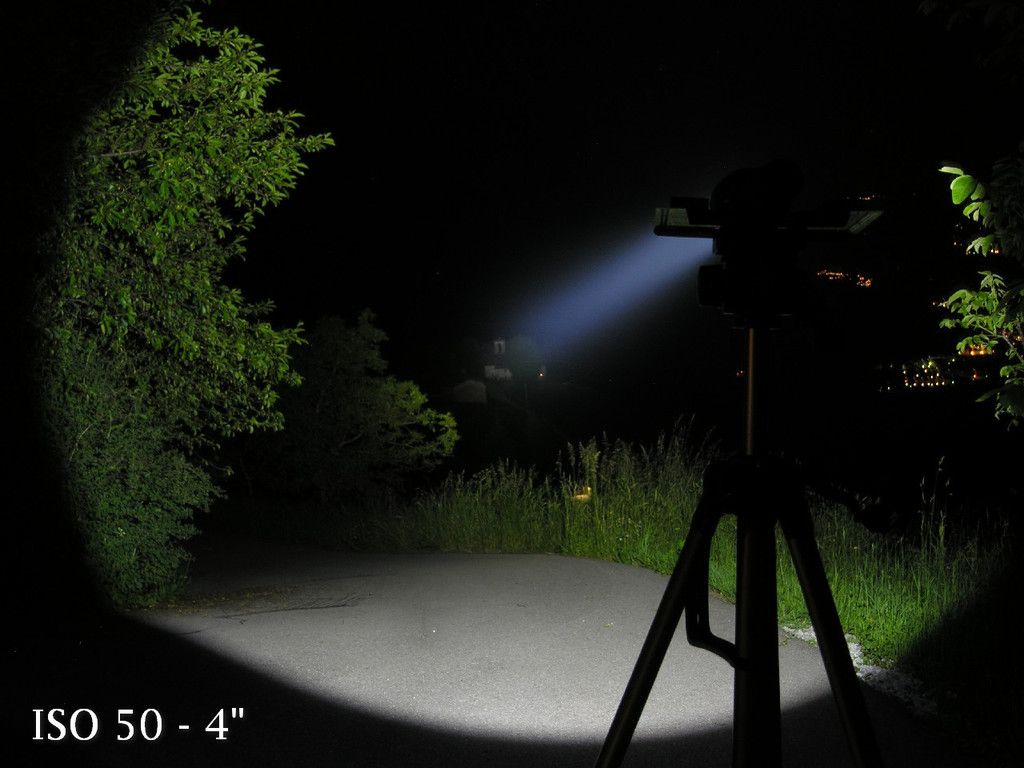


The sampling rate on the luxmeter is 2” for the turbo measurement, 60” for all the other levels tested.
The Turbo curve I get now is completely different from the one I published before. I checked the data log from that old test, and I can’t find any error.
However, I tested the first 10 minutes of runtime at turbo 3 times with 2 different cells and got the same results… This can’t be wrong.

After the stepdown at turbo, the output is still much higher than the one high level.
You can reset the stepdown, just switch off and back on the light.

However, as you can see in the last graphic, what you gain is around 10% of output. Such a small gain at 1000+ lumens is something very hard to notice by eye, while the light will have a lot more heat to handle.
EDIT: 10 July 2016
How about runtime with the 26650?



My thoughts
The U21 is a relatively compact thrower with a big and bright spill with just a couple of rings in the beam (you can see them in the pics). Fit and finish are great (I love the matte black anodization).
The U21 looks bigger in the pics than in the hand. The electronic switch helps reducing the length of the light. The light will I fit in a big pocket of a winter jacket, in a funnypack…
The electronic switch at the head of the light allows to turn on, operate and turn the light off without moving your hand on the light.
The highly driven driver gives the light a lot of output (I found Manker’s spec to underestimate the output of the light), throwy beam with still a decent spill, and great regulation. The stepdown are only present: after the 3 minutes at the turbo, and when the battery is running low. On this light the stepdown is very small compared to other lights.
It’s good to have more than 900 lumens for more than 1 hour from a single 18650, if you use a hi capacity 26650 the runtime will be a lot more, keeping the same size factor.
The levels are well spaced.
Having a micro USB port for recharging the battery inside the light is always a welcome feature.
Manker says it can charge the battery with currents up to 2A. I do not know how to measure this, so I will advise you to choose the output current of the supply carefully: if it is an 18650 that you have in the light, a 1 Amps charger will be fine. If you have a 26650 battery, you can adopt power supply with more output keeping the charging times in reasonable limits.
The supplied adaptor is very large and the 18650s I tested rattle inside the body of the light, but this does not affect the light functionality. I used a piece of paper, rolled around the 18650 and inserted inside the battery adapter to fix the rattling. You can be more professional and use another battery adapter, or come up with better fixes than mine.
Accessing to strobe is easy, maybe a bit too much (I would decrease the delay for the light to consider two single click a double click, let’s say a 1/10 or 1/5 of a second; Manker has already done so compared to the U11 and the T01 models (it is more difficoult to get into strobe accidentally), but I’ll decrease it even more.
This light, as all the other Manker I tested, gives you accesso to a low mode and the last used mode that was not low.
I like direct access to low mode and a higher output mode, but I would like to see quick access to low, turbo and another level. Maybe adopting a triple click feature, or a double stage electronic switch could help “improving” further the UI.
When this review is published, the price of the U21 is 65$.
I find the price reasonable.
Manker said that they will release soon a NW version of the U21.
Thanks to: AntoLed (for lending me the camera and the luxmeter) and P.P. (Beamshot location), Manker (battery funding).
For you BLF guys, nothing really new is said in this video, but you can still admire the light moving in my hands while I delight you with my english.
